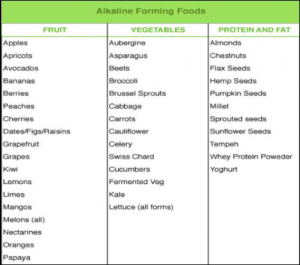If you talk to health experts, you will realize that they put a lot of emphasis on maintaining an optimum pH for your body. So what exactly is this pH and why is it so important? Let us tell you. pH is a measure of the hydrogen ion concentration. The pH scale ranges from 1(acidic) to 14(basic/alkaline) with 7 being neutral. Ideally, the pH of your blood should be between 7.35-7.45. This is because according to Nobel Prize winner, Dr. Otto H Warburg, “no disease including cancer, can exist in an alkaline environment”.
And well, as you know, your body is a great warrior that works to maintain this optimal environment. However, if the pH of your body becomes more acidic, this means that it will have to work harder to maintain the alkalinity and this will cause the body more stress. That’s why it is vital for you to balance you diet to maintain this optimal pH. Let’s now look at all the effects that can occur in various systems as a result of varying pH.
Effects on the Respiratory System
Increased acidity can hamper the transport of oxygen throughout the body. Along with this, a highly acidic environment favors the production and buildup of mucus in your lungs. This can sometimes even lead to infections and other diseases such as asthma, bronchitis and colds.
Effects on the Circulatory System
Most cardiovascular diseases occur due to the deposition of bad fats. But did you know that this deposition occurs as the body’s response to an inflammation due to an internal acidic environment? The body does this is order to prevent life-threatening leaks. Although it seems like a short-term solution, in the long term it can lead to angina and heart attacks due to the severely narrowed blood vessels.
Effects on the Digestive System
When there is an excess of acidic food intake, this will lead to more acid in the gastric region. Coupled with a discrepancy of alkaline minerals, this will then exhaust your pancreas. Since the pancreas have a big role in regulating your digestive organs, this can often cause inflammation and degeneration of your digestive organs.
Effects on the Immune System
Acidic environments make sure that the harmful bacteria in the body remain dormant and inactive. However, acidic environments can sometimes even cause proliferation of anaerobic bacteria. A lot of the bacterial activity depends on the cellular pH and pH of the body fluids. So, if an optimum pH is maintained all these bacteria can be kept in check. That’s a big deal!
Effects on the Skin and Musculoskeletal System
A slightly alkaline environment enhances aerobic metabolism and can help the body achieve homeostasis faster after strenuous exercises. On the other hand, an acidic environment hampers this process and can lead to increased tiredness and fatigue. In addition, a highly acidic ratio can lead to inflammation of joints and stiffness due to pH imbalance and acid deposition. In the skin, a pH imbalance can lead to development of acne, sores, rashes, redness and inflammation.
Effects on the Urogenital System
A highly acidic environment can lead to the formation of kidney stones. It has also been suggested that disruption in the cellular pH can lead to decreased libido and fertility. A higher rate of miscarriage may also be a result of disruption of pH balance.
So what is the best way forward?
The ultimate goal in life is

balance and this same rule applies in terms of food. As you have read above, it is key to maintain an optimum pH for the body because too much acids or too much of bases can cause severe problems. So here you go!

Using the charts given below, you can choose the proper foods and make sure that you are eating alkaline as well as acidic food in a balanced way.



